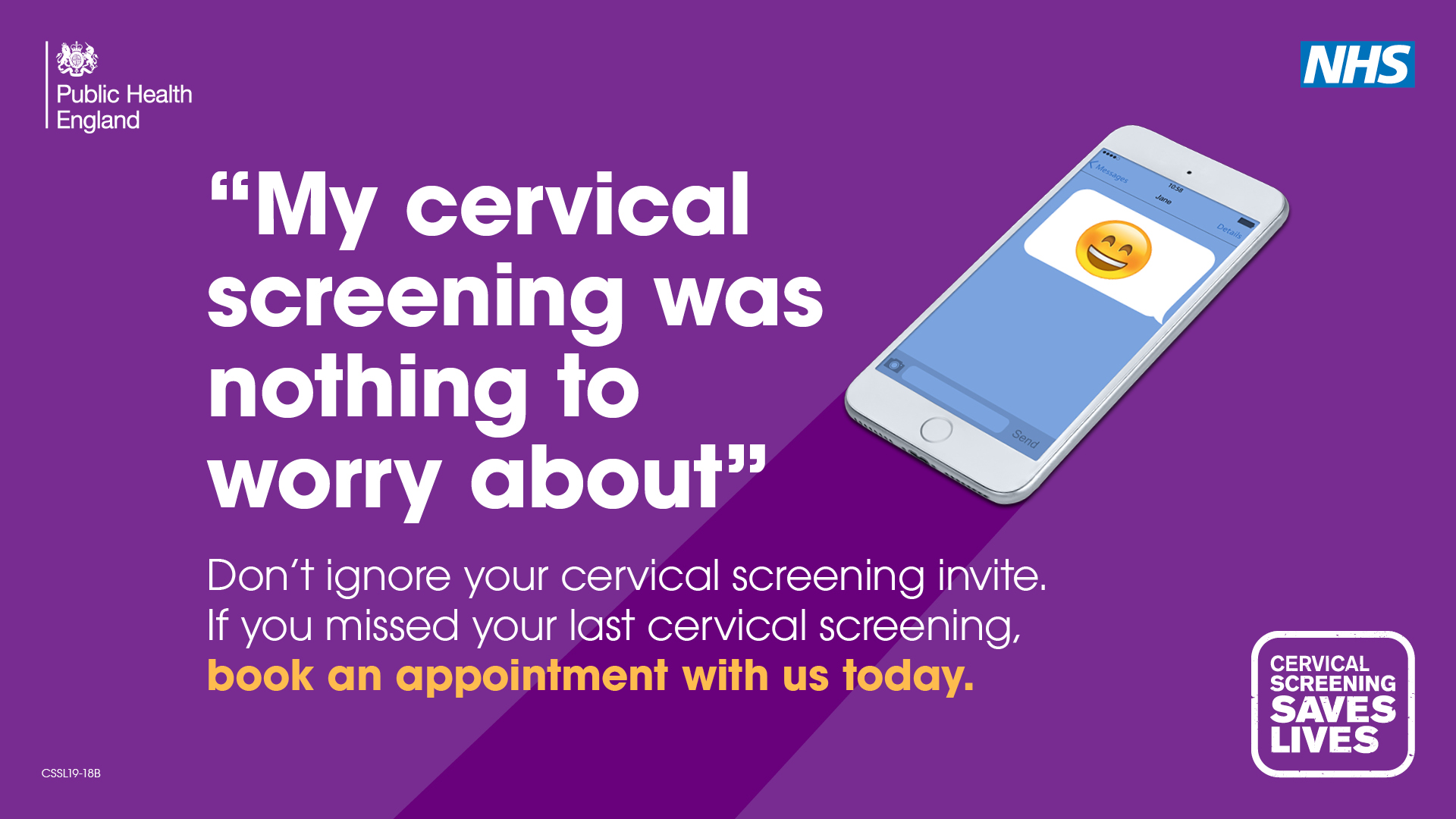Cervical Screening
What is cervical screening?
- Cervical screening (a smear test) checks the health of your cervix. The cervix is the opening to your womb from your vagina.
- It’s not a test for cancer, it’s a test to help prevent cancer.
- All women and people with a cervix aged 25 to 64 should be invited by letter.
- During the screening appointment, a small sample of cells will be taken from your cervix.
- The sample is checked for certain types of human papillomavirus (HPV) that can cause changes to the cells of your cervix. These are called “high risk” types of HPV.
- If these types of HPV are not found, you do not need any further tests.
- If these types of HPV are found, the sample is then checked for any changes in the cells of your cervix. These can then be treated before they get a chance to turn into cervical cancer.
- You’ll get your results by letter, usually in about 2 weeks. It will explain what happens next.
Why is it important
Cervical screening is one of the best ways to protect yourself from cervical cancer.
Cervical screening is not a test for cancer, it’s a test to help prevent cancer.
How cervical screening helps prevent cancer
Cervical screening checks a sample of cells from your cervix for certain types of human papillomavirus (HPV).
These types of HPV can cause abnormal changes to the cells in your cervix and are called “high risk” types of HPV.
If these types of HPV are found during screening (an HPV positive result), the sample of cells is then checked for abnormal changes. If abnormal cells are not treated, they may turn into cervical cancer.

You can find more information on Cervical Screening on the NHS website.
Have you recently been invited for #CervicalScreening (a #SmearTest)?
— Jo's Cervical Cancer Trust (@JoTrust) December 7, 2020
Your GP practice will have measures in place to keep you safe from #Coronavirus. While your experience might look a bit different, the test is exactly the same.
Find out what to expect at your appointment ? pic.twitter.com/2ntNd4zgJD
